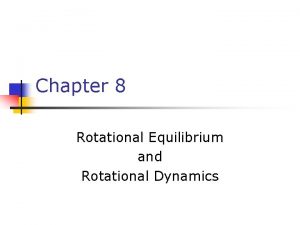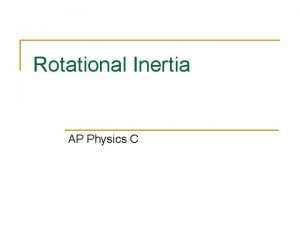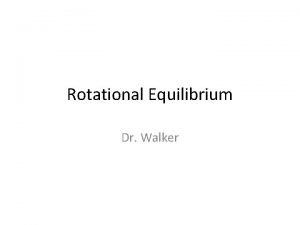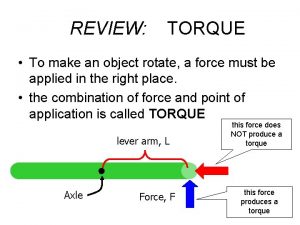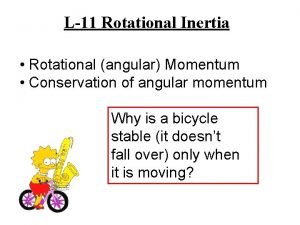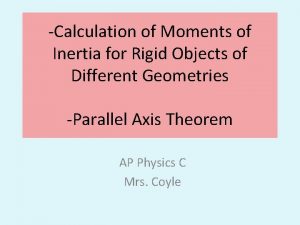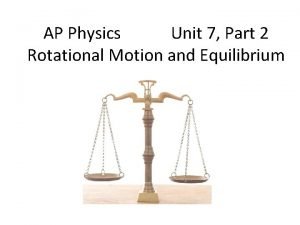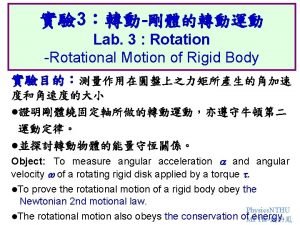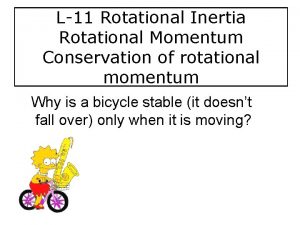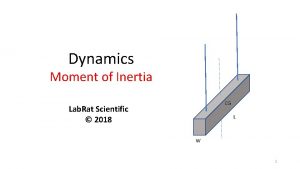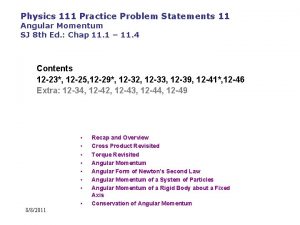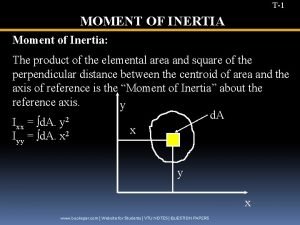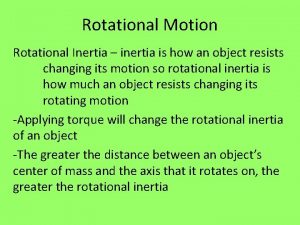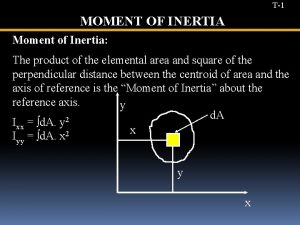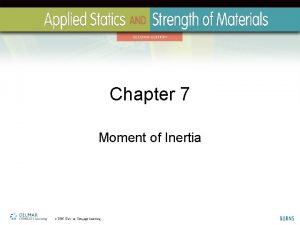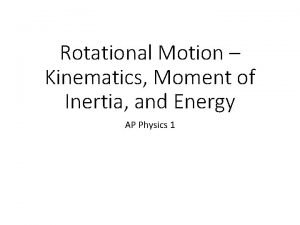Energy in Rotational Motion Moment of Inertia PHYS116












- Slides: 12

Energy in Rotational Motion, Moment of Inertia PHYS-116 A-03, 10/12/09, Lecture 22 Momchil Velkovsky

A DVD is rotating with an ever-increasing speed. How do the centripetal acceleration arad and tangential acceleration atan compare at points P and Q? • • A. P and Q have the same arad and atan. B. Q has a greater arad and a greater atan than P. C. Q has a smaller arad and a greater atan than P. D. P and Q have the same arad, but Q has a greater atan than P.

The graph shows the angular velocity and angular acceleration versus time for a rotating body. At which of the following times is the rotation speeding up at the greatest rate? • • • A. t = 1 s B. t = 2 s C. t = 3 s D. t = 4 s E. t = 5 s

We have three fundamental equations for the kinematics of constant angular acceleration

Rotational energy • Just like linear kinetic energy is ½ mv 2, the angular energy will be determined by ½ Iω2.

Finding the moment of inertia for common shapes

The three objects shown here all have the same mass M and radius R. Each object is rotating about its axis of symmetry (shown in blue). All three objects have the same rotational kinetic energy. Which one is rotating fastest? A. thin-walled hollow cylinder B. solid sphere C. thin-walled hollow sphere D. two or more of these are tied for fastest

Energy conservation with rotating bodies

A thin, very light wire is wrapped around a drum that is free to rotate. The free end of the wire is attached to a ball of mass m. The drum has the same mass m. Its radius is R and its moment of inertia is I = (1/2)m. R 2. As the ball falls, the drum spins. At an instant that the ball has translational kinetic energy K, the drum has rotational kinetic energy A. K. B. 2 K. C. K/2. D. none of these

Extended bodies and the Parallel Axis Theorem

How to calculate I ?

Reading for next time • 1. 10 and • 10. 0 – 10. 4
 Chapter 11 rotational equilibrium
Chapter 11 rotational equilibrium Second condition of equilibrium
Second condition of equilibrium Rolling physics
Rolling physics Angular velocity and inertia
Angular velocity and inertia Units for rotational inertia
Units for rotational inertia Youtube.com
Youtube.com Moment of inertia formula for a rod
Moment of inertia formula for a rod Ap physics unit 7 mcq part a
Ap physics unit 7 mcq part a Rotational inertia unit
Rotational inertia unit Rotational inertia
Rotational inertia Inertia of disk
Inertia of disk A sanding disk with rotational inertia
A sanding disk with rotational inertia Iyy moment of inertia
Iyy moment of inertia
